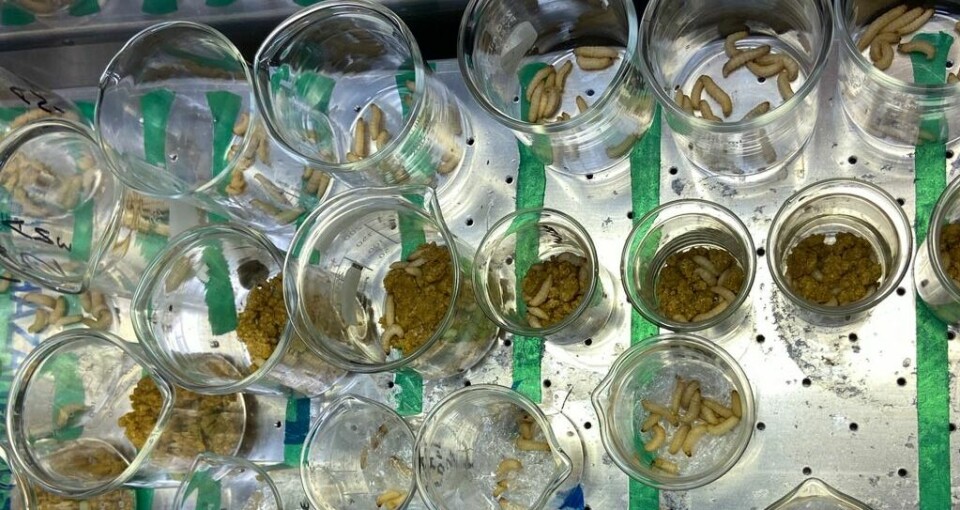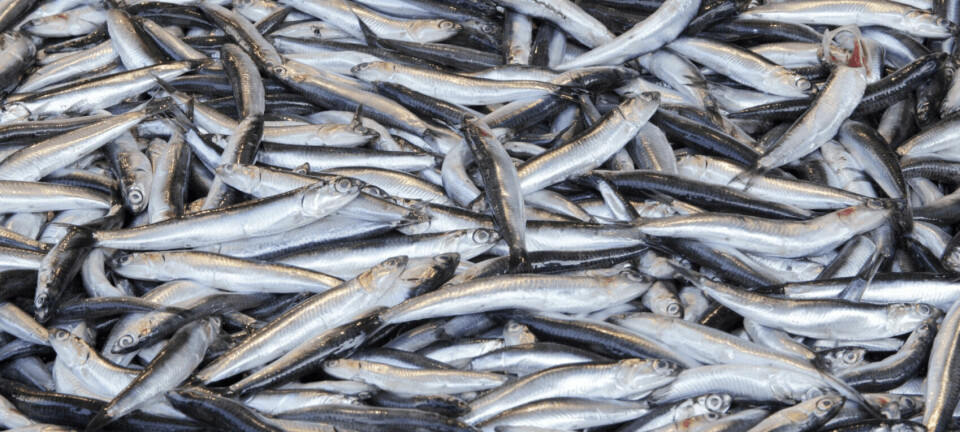
Plastic-eating caterpillars could be on the menu for salmon
Researchers use fish gut simulator to show that waxworms fed on cling film may be suitable feed ingredient
Waxworms fed on plastic waste have the potential to become a new source of protein for farmed salmon feed, researchers in Scotland say.
Glasgow University-based start-up SalmoSim, which uses a salmon gut simulator that analyses the digestibility of alternative forms of aquafeeds, has found that waxworms fed on plastic waste offer the same nutritional value to farmed salmon as other commercially available insect meals.
Originally developed to study the salmon’s gut microbiome, SalmoSim is now deploying a novel assay named “SalmoSim Digest” which predicts the digestibility of alternative ingredients alongside a model for the absorption of nutrients by the fish. Benchmarking of the SalmoSim-Digest model against tests on real salmon show that SalmoSim is 87% accurate.
Fishmeal replacement
Over recent years, protein-rich insect meal has been found to be a suitable ingredient in the diet of farmed salmon, with the potential to replace some or all of the fishmeal content. Performance of salmon was found to be similar to those fed industry standard fishmeal. However, many insect meals struggle to compete on price with other protein sources.
Waxworms, which are the caterpillar larvae of wax moths and are produced as a bait for angling, have been shown to readily consume polyethylene as part of their diet, making them potentially cheaper to produce.
Using the salmon gut simulator, the SalmoSim team tested the hypothesis that waxworms fed low-density polyethylene (LDPE) could be a more accessible source of protein for fish feeds, as well as solving a plastic waste problem. LDPE is not currently recycled and makes up around 20% of all waste.
As part of the testing process, waxworms were maintained with a diet of either LDPE plastic (cling film) or a traditional balanced diet while waxworm growth was monitored. Waxworms fed LDPE gained weight compared to unfed controls.
Amino acid digestibility
A whole waxworm meal powder was produced and subjected to SalmoSim digestibility assay, with digestive phases mimicking the stomach, pyloric caecum, mid-gut and hind-gut of Atlantic farmed salmon. During enzymatic digestion, small nutrients were absorbed from the digesting feed and the amount of absorbed amino acids was determined by spectrophotometric assay.

In-vitro digestibility was calculated by comparison of crude protein concentrations before and after the digestibility assay in a manner mimicking live salmon feeding trials to determine a digestibility coefficient value for each bioreactor digesting the ingredients.
No significant difference in absorbed amino acids was found when comparing the control waxworms with those fed LDPE plastic indicating their plastic diet did not impact on the waxworm’s concentrations of amino acids digestible by salmon. The overall digestibility of plastic-fed worms was slightly higher than those fed on normal feed.
Compared to other insect meals, and benchmarked against fishmeal, waxworms performed very well and could be an important source of feed for salmon, said SalmoSim in a press release. Further testing is now required to establish the safety of salmon fed on plastic-fed waxworms.
Hugely encouraged
Martin Llewellyn, Professor of Molecular Ecology at Glasgow University and founding director of SalmoSim, said: “We are hugely encouraged by these data which indicate waxworms used to break down plastic could be a potential source of protein for farmed Atlantic salmon.
“As the pressure on wild fish stocks used for fishmeal continues to grow, the need to find alternative, sustainable and low-cost feed stocks for farmed fish has never been greater. While the next step is to ensure that plastic-fed wax worms pose no toxicity to salmon, and can safely enter the human food chain, there is clearly exciting potential here and we look forward to continuing with our research into sustainable protein sources for farmed Atlantic salmon.”
Llewellyn told Fish Farming Expert that he believes waxworms could eventually replace fishmeal, so long as pre-processing and amino acid content is suitable.
“This is something we are currently looking at using SalmoSim,” he added.




















































